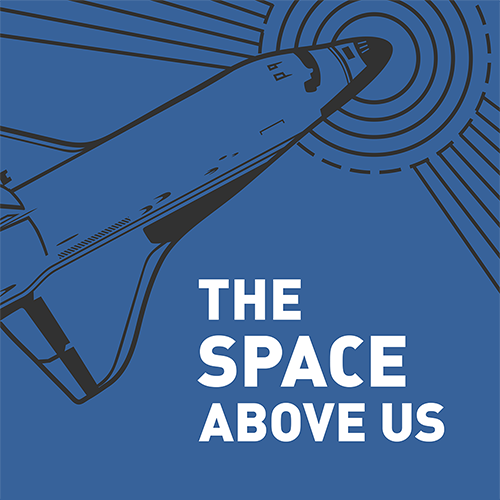Episode 191: STS-98 - Destiny Manifest (ISS 5A: Destiny)
Table of Contents
On STS-98 it’s time for the ISS crew to meet its Destiny. Oh wait, does everyone make that joke? How about “Destiny is on the manifest”? No, I already used that in the title. OK, let’s go with “humanity’s Destiny is off the planet”. Yeah, that works!
Episode Audio #
Photos #
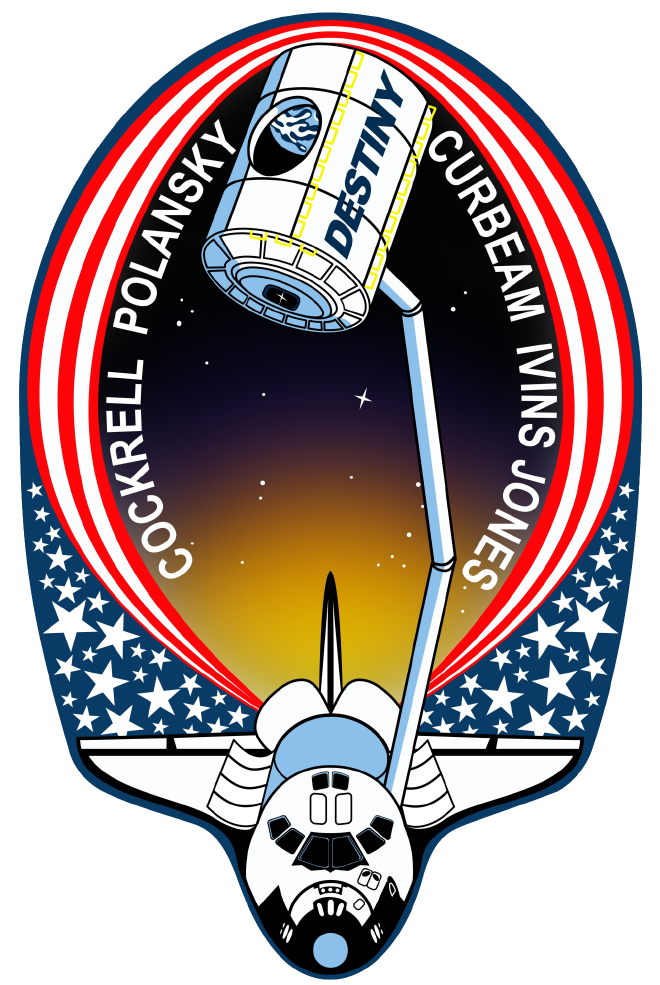
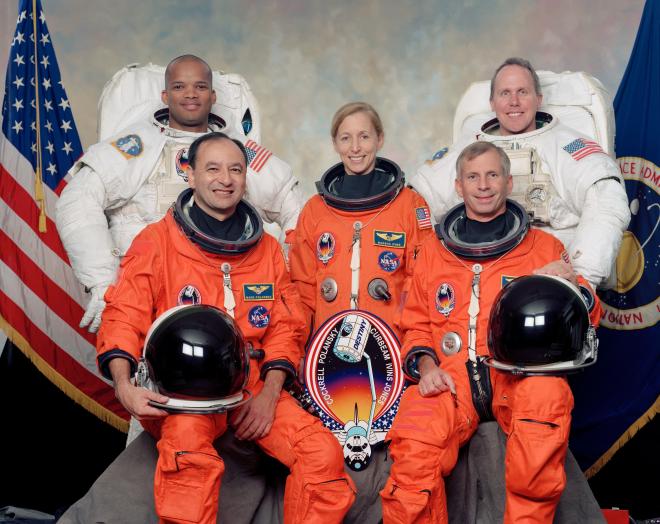
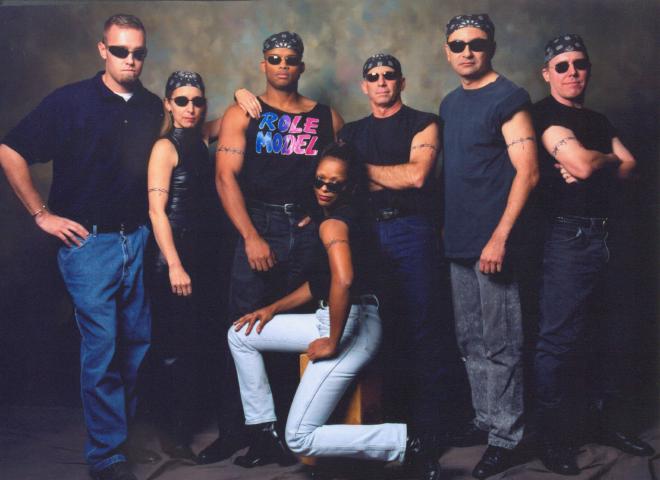
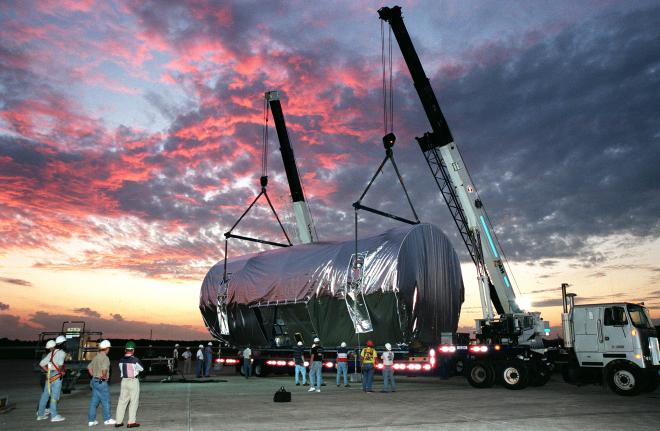

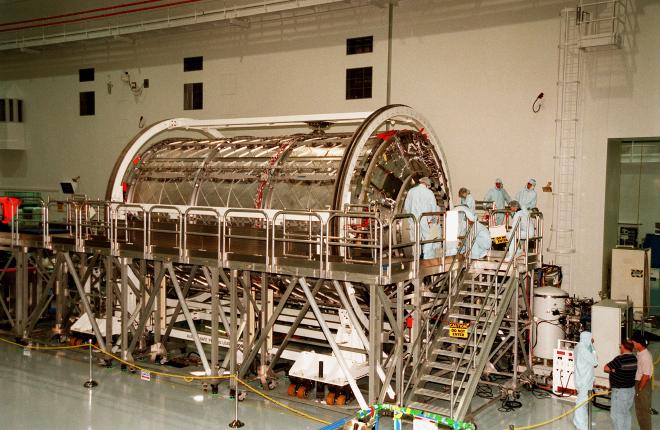
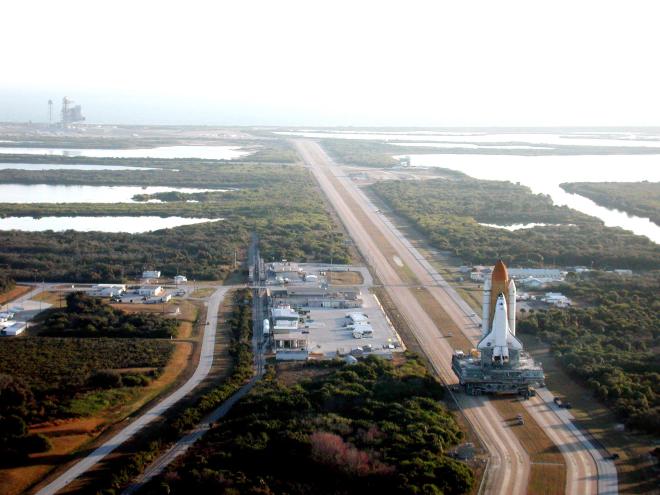
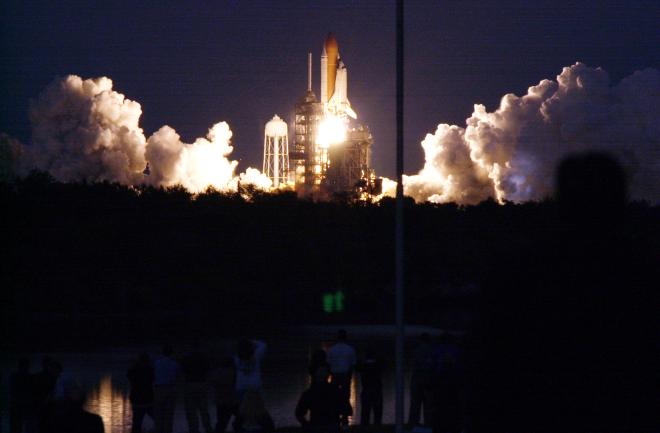
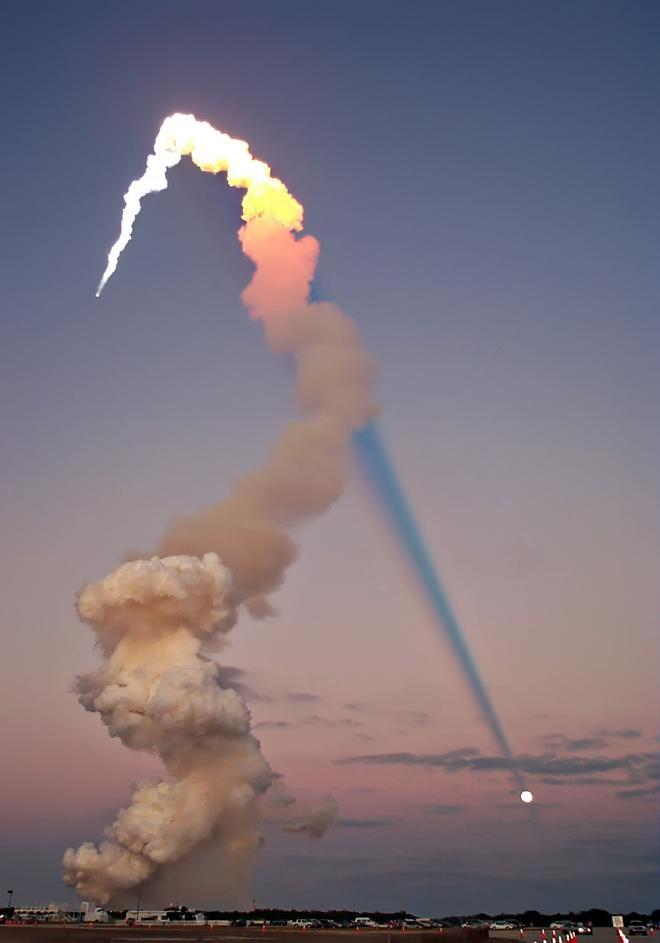
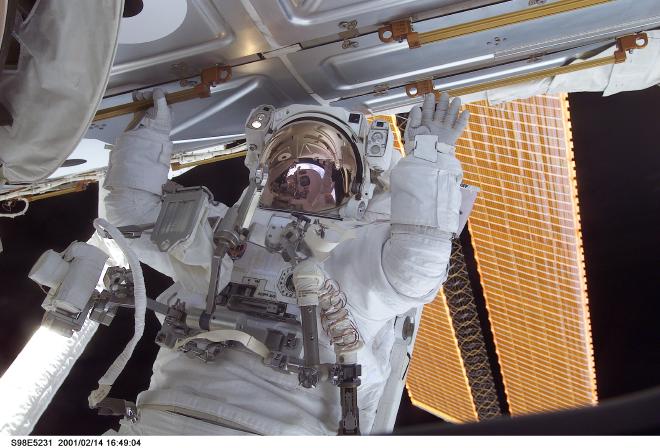
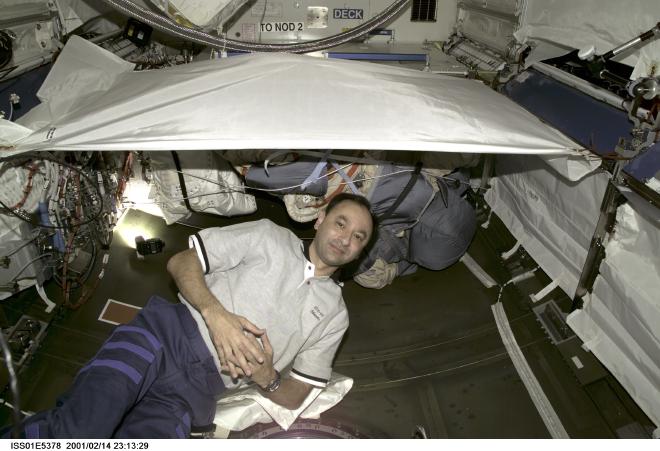
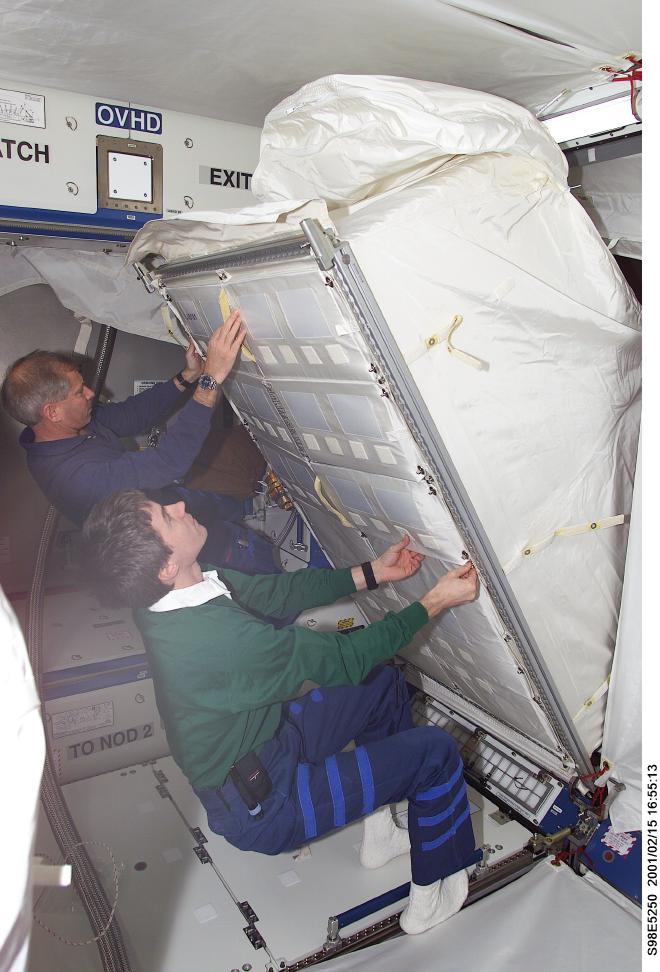

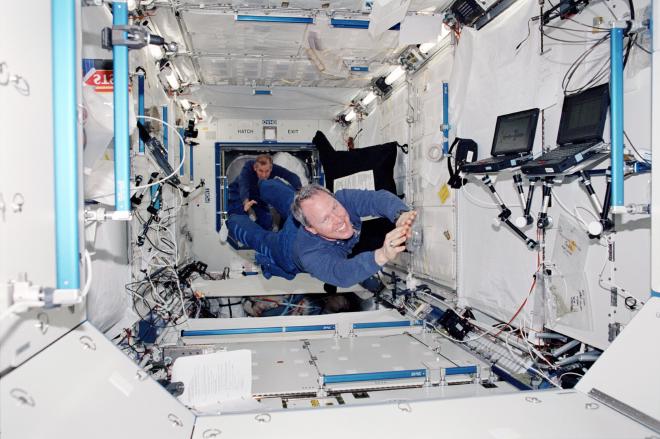
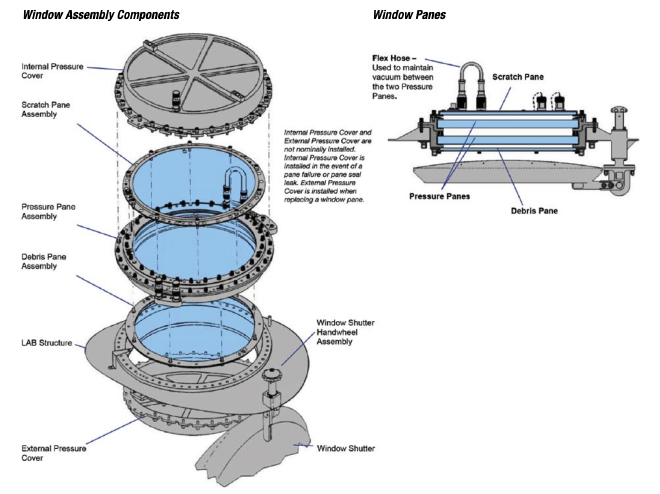
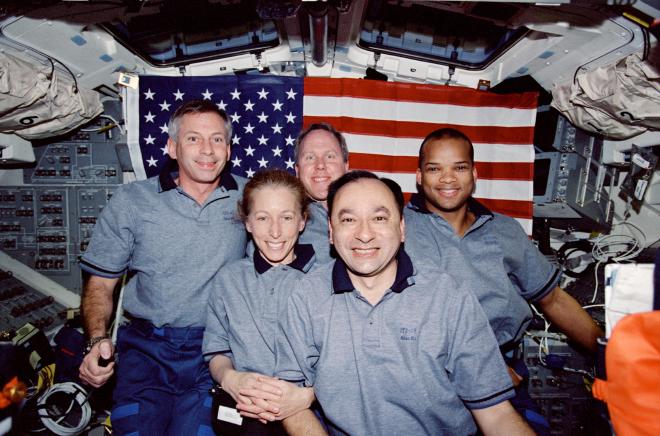
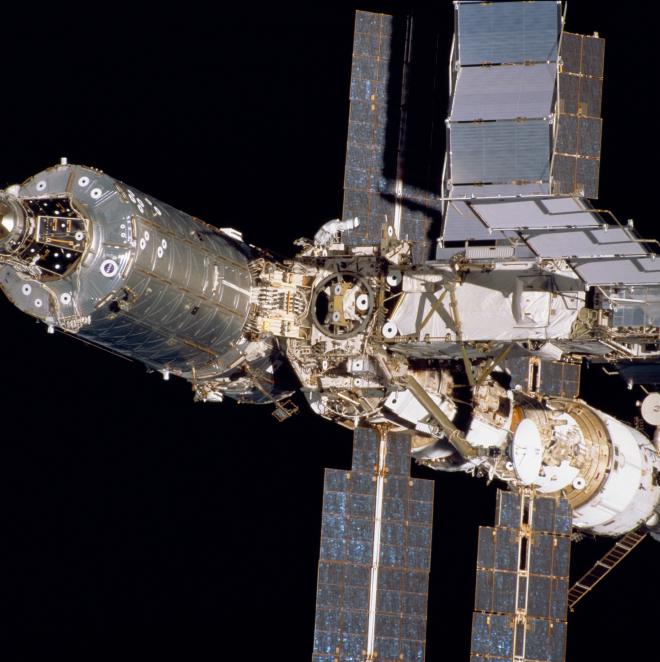

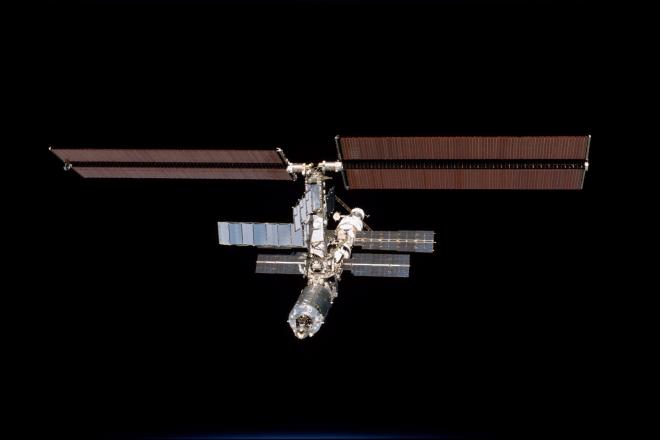
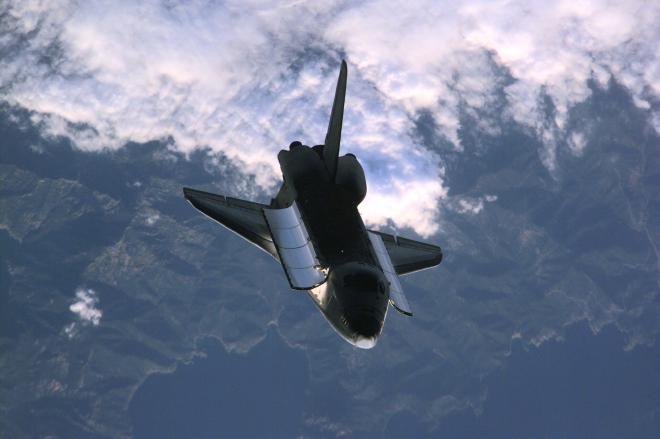
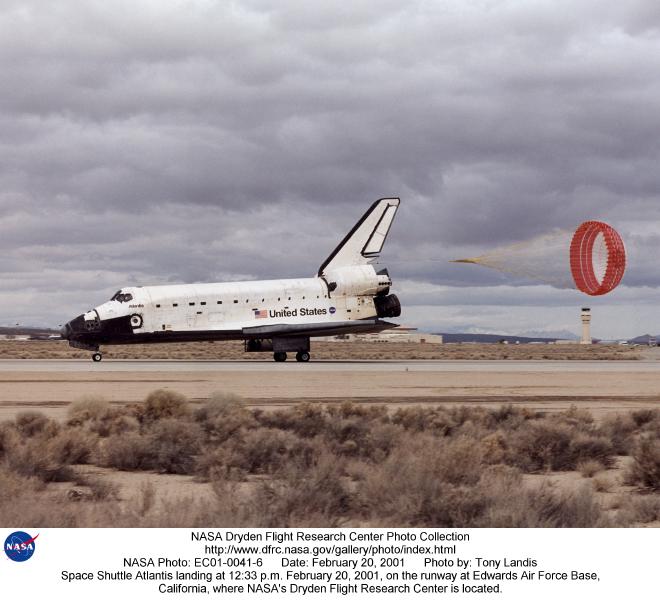
For more photos, head over to our friends at Wikiarchives.space: https://wikiarchives.space/index.php?/category/876
Post-Flight Presentation #
To see the mission in motion, check out the post-flight presentation!
Click here for full video details.
Destiny Berthing Animation #
A handy, if short, animation that shows the berthing of the Destiny module much much much faster than it actually happened. It’s also a little inaccurate since I’m pretty sure one or two of those radiators weren’t deployed yet at this point. But if you squint you can make out PMA-2 stuck onto the front of Z1.
Water Bag Video #
I couldn’t resist adding some music to the clip of Ken Cockrell getting knocked into the Node by a bag of water. (Yes it’s playing right. I just had to stretch the first fraction of a second out over several seconds to make it hit the music right)
Transcript #
NOTE: This transcript was made by me just copying and pasting the script that I read to make the podcast. I often tweak the phrasing on the fly and then forget to update the script, so this is not guaranteed to align perfectly with the episode audio, but it should be pretty close. Also, since these are really only intended to be read by myself, I might use some funky punctuation to help remind myself how I want a sentence to flow, so don’t look to these as a grammar reference. If you notice any egregious transcription errors or notes to myself that I neglected to remove, feel free to let me know and I’ll fix it.
Hello, and welcome to The Space Above Us. Episode 191, Space Shuttle flight 102, ISS 5A, STS-98: Destiny Manifest
Last time, we rode along on Space Shuttle Endeavour as it carried aloft the P6 truss: the first of four massive pairs of solar arrays for the International Space Station. Installation of P6 went smoothly enough, but when it came time to actually deploy the gigantic solar arrays, the crew found themselves in a sticky situation. That is, the unfolding solar array blanket stuck to itself, before occasionally unsticking and sending violent oscillations through the blanket, knocking some of its tensioning wires off their spools. Well, as usual, the folks on the ground and the crew on orbit worked together to develop and execute a solution, and STS-97 left the station bigger and with more electrical power than ever before. On today’s flight, we’ll put the capabilities of Z1 and P6 to use.
That’s because on today’s flight, we’ll be launching and installing NASA’s first permanent orbiting laboratory since Skylab, nearly 30 years earlier. The US Laboratory Module, dubbed “Destiny”, took up half the payload bay, measuring in at 28 feet long, 14 feet in diameter, weighing roughly 15 tons, and coming with a price tag of around 1.4 billion dollars, not adjusted for inflation. In metric that’s 8.5 meters long, 4.3 meters diameter, still roughly 15 tons, and about 1.5 billion euros, still not adjusted for inflation. Euros are like metric dollars, right? Don’t answer that. In essence, Destiny would provide a Spacelab-like capability, but would not be limited by the relatively short duration of a typical Space Shuttle mission. Instead of coming home after two weeks because of dwindling fuel cell reactants, Destiny would cruise on for month after month, year after year, decade after decade powered by the enormous solar arrays on the Station. Soon we’ll be growing crystals the size of our heads! But first we need to get this sophisticated new facility into orbit and firmly attached to the growing International Space Station. So let’s meet the crew who will get it there.
But first, just because I could find no better place to squeeze this into the episode: fun fact! This is the last Shuttle flight with a mission number lower than 100. There have been a lot of Shuttle flights. Anyway, now let’s meet the crew.
Commanding the flight is our old buddy Taco. No, not the elf from TV, that’s a different Taako. This was Ken Cockrell, flying on the left side of the cockpit for the second time. When we last saw him, he was commanding STS-80, the third and final flight of the Wake Shield Facility. On this mission he’ll be again rendezvousing with a target in space, but this one is just a little bit bigger than the Wake Shield Facility. This is his fourth of five flights.
Joining Cockrell up front was today’s pilot, and lone rookie on the mission, Mark Polansky. Mark Polansky was born on June 2nd, 1956 in Paterson, New Jersey, but grew up in nearby Edison, New Jersey. Growing up in the 1960s, Polansky followed the Mercury, Gemini, and Apollo programs, and decided that “astronaut” seemed like a pretty cool job. He ended up at Purdue University, our favorite astronaut factory, and got to meet Gene Cernan and Joe Allen, who further stoked his interest in becoming an astronaut. He graduated from Purdue in 1978, having earned both a Bachelor’s and a Master’s degree in aeronautics and astronautics, so he must’ve been a pretty busy guy. From there, he joined the Air Force, flying F-15s and F-5s before heading out to Edward’s for Test Pilot School. He spent five years flying F-15s and A-10s as a test pilot, and then came to work for NASA as a pilot out at Ellington Field, right in the backyard of the Johnson Space Center. In 1996 he was selected as an astronaut and this is his first of three flights.
Sitting behind Polansky on the flight deck was Mission Specialist 1, Bob Curbeam. We know Curbeam, aka Beamer, from STS-85, a little more than three years earlier, which among other things deployed and retrieved the CRISTA-SPAS platform on its final flight. This is Curbeam’s second of three flights.
Sitting beside Curbeam in the middle of the flight deck was Mission Specialist 2, and someone we’ve known for a long time now: Marsha Ivins. We most recently saw Ivins on STS-81, which delivered Jerry Linenger to Mir while bringing John Blaha home. But we first saw Ivins waaay back on STS-32, which retrieved a unique little spacecraft by the name of LDEF. I mention that, because today Ivins will be using the Shuttle’s robotic arm to deliver Destiny to its berth on the ISS, but will also be closing out a remarkable astronaut career on this, her fifth and final flight.
And last but certainly not least, and hopefully not too lonely down on the middeck by himself, we have Mission Specialist 3, and friend of the show, Tom Jones. We most recently saw Jones actually on this show, when he kindly took the time to chat with us about his third spaceflight, STS-80, which was also commanded by Ken Cockrell. And in fact, we’ll be hearing from Jones a lot on this episode since he popped up with some interesting quotes in like half the sources I read for this flight. STS-80 saw the third and final flight of the Wake Shield Facility but is probably best remembered by Tom Jones as that time that Columbia’s hatch wouldn’t open and he didn’t get to go on a spacewalk. Well Jones is back to try again, and this time I promise the hatch will open on this, his fourth and final flight.
As has been the norm lately, for parts of the STS-98 crew it has been a long wait to fly due to delays with commencing assembly with the International Space Station. Thanks to some interviews with mission Commander Ken Cockrell and Mission Specialist Tom Jones, we can gain a little insight into what that wait, and the buildup to launch day, is like. You might be tempted to think that with double the usual time to prepare, the crew would be swimming in extra training time. And to a certain extent that’s true. But despite the wealth of expertise, personnel, and training facilities that NASA possesses, the agency, sadly, does not have infinite resources. The pipeline is really set up to primarily focus on a single mission at a time. So it wasn’t really until the flights ahead of STS-98 began to ramp down their training that attention really turned to this crew. Or as Cockrell put it, “A couple of months ago, [with] the final loads of our software, […] the paperwork, the checklist of the flight; […] they’ve all started descending upon us.”
Jones described events as moving at a snail’s pace with him marking time, hoping things would be finalized soon, but now they’re in an avalanche, tearing downhill at the fastest pace they can imagine and trying to stay on their feet while avoiding giant snowballs. He describes how around nine months before the launch, the mission really starts to consume the crew’s lives. At that point they really begin to rely on their schedulers to include stuff like going to the gym or getting lunch, otherwise they’ll just be working 10 hours straight without a break. Starting around six months before launch they begin to lose track of weekends, as work and trips out to the Cape begin to spill out of the work week. From three months onwards, it’s “just crazy, out of control.” Jones talks about it being at this point that he can see concern from his family as everyone scrambles to the finish line. In the last few weeks you lose track of what’s even coming up tomorrow. You stop worrying about having any free time because it simply doesn’t exist. All a crew member can do is hope that there will be an event that ends early or is canceled so they can maybe grab a half an hour at their desk. And in the final push, all you want to do is get off the treadmill. Jones said that at that point “I can’t wait to get into quarantine, where we’re isolated from everyone for the last few days before launch. Because then I’ll get some rest.”
What I found especially interesting about this vivid description of the buildup to launch, was that at least in theory, this workload is actually an improvement compared to the Apollo days. It also helps provide some insight into how the crews can seem so calm and collected as they wave to the press on their way out to be strapped into a few million pounds of explosives. At that point they’ve been working at such a breakneck pace that the mission itself is a relief.
Personally, I kind of thrive on that sort of “crunch, relax, crunch, relax” rhythm, but I’ve never had to try it with a crunch period that lasts for month after month like that. While part of me still thinks that anyone who walks away from the job of “astronaut” is crazy, when reading descriptions like this I can kind of get it.
That buildup to launch was extended just a bit more once the Solid Rocket Boosters from STS-97 were fished out of the ocean and the issue with the primary pyrotechnic cartridge failing to fire was discovered. Space Shuttle Atlantis had been rolled out to the launchpad for STS-98 on January 3rd, but had to be rolled back to the VAB on the 19th for inspections of its SRBs. No issues were found, and a week later it made the slow trip back out to the launchpad.
On the day of the launch, there was a slight delay caused by a disagreement between ground side equipment and hardware in the Orbiter. When ground power was reduced during the loading of the fuel cells, instruments on the ground and on the Orbiter reported different values, requiring a little investigation. It was soon determined that the issue lay on the ground side of the equation, so the launch was able to proceed, just 1 minute and 46 seconds later than planned.
On February 7th, 2001, at 6:13 and 2 seconds PM, Eastern Standard Time, the vehicle roared to life and Space Shuttle Atlantis once again leapt off the pad. Later, Pilot Mark Polansky quipped “I don’t know what you can say about sitting on top of a rocket all loaded up and ready to go, it was pretty exciting.” He also had a funny slip of the tongue, speaking during the post-flight presentation, when he said “Six seconds before launch, the solids light.. excuse me, yeah, not the solids, I hope. THEN the solids light. That’s why I’m the pilot and he’s the commander.”
Ascent was uneventful, but there was a tweak to the onboard software that’s worth mentioning. For the last 20 years, when the Solid Rocket Boosters separated, the crew would be treated to the somewhat jarring light show caused by the separation motor plumes blasting the flight deck windows. This actually had a tendency to cause some minor damage to the vehicle and hazing to the windows so it was never great. Starting with this flight, two of the upward facing RCS thrusters in the nose of the Orbiter would fire for 2.02 seconds during SRB sep, changing the airflow patterns around the vehicle, and deflecting the separation motor plume. The result was significantly less damage from debris, as well as clearer windows since they were no longer getting blasted by mini solid rockets on the way to orbit. Once they got through SRB sep, MECO, and ET sep, the crew popped out of their seats, opened the payload bay doors, and only five hours after lifting off were settling in for their first sleep period.
Two days later, Atlantis had its target in sight and the crew began the final approach. During this rendezvous, Commander Ken Cockrell was, of course, at the aft flight deck flying the vehicle. Pilot Mark Polansky was at the front of the flight deck, operating the Orbiter’s computer. Mission Specialist Bob Curbeam took photos until Atlantis got closer, at which point he switched his attention to the Orbiter Docking System. Mission Specialist Marsha Ivins operated the handheld laser rangefinder, and once they were really close she made sure that the focus on the centerline camera was crisp, making things easier on Commander Cockrell. And finally, Mission Specialist Tom Jones kept an eye on RPOP, the laptop-based software that synthesized inputs from the last known state vector, the Trajectory Control System, and the laser rangefinder to provide a realtime display of where the Shuttle was in relation to the Station, and where it would be going next.
Since today’s destination was PMA-3, on the nadir side of the Station, we are again performing a +R-bar approach, moving up from directly beneath the ISS. And actually, since we’ll be using PMA-2 from here on out, this is the final time the Shuttle will approach along the Station’s R-bar. Just like last time, once Atlantis reached about 180 meters, Cockrell began to slowly yaw Atlantis around, slewing to a tail-forward attitude. Cockrell talked about this in a pre-flight interview, saying that this was more of an art than a science, and it took a lot of practice to be able to execute this maneuver without squandering their limited supply of propellant, while still being sure to complete it by the 120 meter mark. It was important to be in the proper attitude by that range to avoid any plume impingement issues with the Station.
Just like Commander Jett on the previous mission, Cockrell was concerned about the potential for a failed docking due to the large offset between the center of masses of the two vehicles and the geometry of the approach, though he did point out that things were actually slightly easier for him since the mass of the P6 truss brought the Station’s center of mass forward. As usual, though, the Shuttle crew made it look easy, and docked on the first attempt with no issues, a little under 42 hours after lifting off.
Unlike on the last flight, the hatches between the Shuttle and Station were opened just a little over two hours after docking. Part of the reason for this was to ensure that critical supplies made it to the Station crew in case of an early departure, but it was also to make life easier for the Shuttle crew. Due to a rescheduling of Progress resupply flights, Atlantis was stuffed to the brim with extra equipment and food. Marsha Ivins said “it’s filling up just about every molecule of space on our middeck.” So by entering the Station early they could reclaim a bunch of room on the middeck as well as get to see their buddies earlier in the flight.
Jones later talked about how he had always been a very Shuttle-oriented guy and not super interested in long duration Station missions. He imagined himself just sort of hopping over to the Station long enough to transfer some equipment and then making his way back to his home base on the Shuttle. Despite this attitude, he found he was taken aback when he and Bob Curbeam headed down to the hatch to open it, and where previously there had just been a black void, suddenly there were these three guys on the other side of the window with their noses pressed right up against the glass. It sounds to me like that sight brought it from a hypothetical thought into reality. He said that entering the Station was like stepping into somebody’s home. Not like a laboratory, not like a submarine, but like somebody’s house, personalized and decorated the way they liked it. Based on what we know about Mir, that sounds about right to me.
The ISS commander continued the newly established tradition and rang a bell to celebrate the arrival of the Shuttle crew, and the combined crews soon got to work transferring equipment. Among all the extra food was also a backup computer for Zvezda, some bags of water, some cables that would be connected to the US Laboratory Module, along with movies and gifts from families. Also, making its second trip into space, was the Enhanced Gaseous Nitrogen Dewar, back with more crystals to passively grow.
After two hours on board, the two crews returned to their respective sides of the hatch, the hatch was closed, and Atlantis slightly depressurized down to 10.2 psi in preparation for the next day’s EVA. And actually, I guess they should have spent a little more time double checking, since three cables that were needed on the EVA were accidentally left on the Station. No problem though, they took a page out of STS-97’s book and the Station crew put the cables in PMA-3, closed the inner hatch, and PMA-3 was lowered down to the Shuttle’s pressure level for retrieval.
The next day, flight day four, was the big day. With extensive robotic operations, a critical EVA, and activation of the new Laboratory module, the schedule was already packed. So of course, the universe chose this moment to send a piece of Russian orbital debris whizzing within 250 meters of the Station. Or at least, it would have gotten that close if Commander Cockrell hadn’t used Atlantis’s thrusters to raise the combined stack’s orbit by about 1.8 kilometers. OK, well, that’s one crisis averted, let’s get started with this long day.
First, before the EVA crew even poked their heads outside, robot arm operator Marsha Ivins had some important work to do. Destiny, the Laboratory module, was to be installed on the forward Common Berthing Mechanism of the Unity node in just a few hours. But see the problem? Yeah, that berth was currently occupied by Pressurized Mating Adapter 2. In order to berth Destiny there, PMA-2 had to get out of the way. Thankfully, the EV crew members on the previous mission had already disconnected the cabling between the Node and PMA-2, so this could be done without anyone heading outside. Ivins hopped on the Canadarm controls, moved the end effector over to PMA-2, and grappled it. For the next step everybody held their breath as the CBM bolts were commanded to retract. I say they held their breath because PMA-2 had been attached to Unity for a long time. Unity had actually launched with the PMA already berthed to its forward CBM, and it then spent the next two years in the unforgiving space environment, which can do all sorts of weird things to materials. There was no guarantee that it would separate from the node without a fight.
Thankfully, PMA-2 was cooperative and came loose with no difficulty. In fact, it’s possible that it was eager to go. At the moment of separation, Commander Cockrell starting playing music over the radio, and soon the lyrics of “Release Me” by Engelbert Humperdinck could be heard in Mission Control. “Please release me, let me go // For I don’t love you anymore.” Harsh words for Node-1, but I guess they had to be said. CAPCOM quipped back “Atlantis, Houston, thanks for the musical interlude. You and Marsha have a second career as DJs when you get back.” to which Cockrell replied “That’s if you let us come back. We’ll see if we can get this job done first.”
Once it became clear that PMA-2 was going to separate without an issue, Tom Jones and Bob Curbeam made the final preparations to head outside. Before the flight, Jones said “I can’t think of another part of STS-98 that’s going to be personally more rewarding for me than opening that door for the first time and sticking my head out the hatch.” Thankfully for Jones, there was no repeat of the STS-80 incident, and the hatch opened without difficulty, and around three and a half years later than planned, he finally made his way out into the payload bay. He later recalled “When that sunlight hit my suit, I felt its heat penetrate the suit’s many insulation layers and warm my arms and legs, like on a pleasant spring day. My worries about the spacewalk evaporated.” Jones, wearing the red stripes on his suit as EV1, was soon followed by Curbeam, who as EV2 had a pure white suit.
For Jones, the first task was to immediately begin making his way up Node-1 and onto the Z1 truss. The Destiny installation couldn’t proceed until the robot arm was freed from carrying PMA-2 around, so they needed a place to put it down. Since this had long been anticipated, it turns out that there was just such a place built into the forward face of the Z1 truss. While Jones and Curbeam had been making their way outside, Ivins had been moving PMA-2 close to its temporary hangout spot, and now that Jones was on site he helped guide Ivins in. If you think about the geometry of this situation, with Ivins down underneath Node-1 and Z1 up on top of it, it’s obvious that she couldn’t see anything directly, but she also didn’t have a great view even with the cameras. So this task fell on Jones literally just saying “come on back, c’mon back, a little left, a little right, pitch a little, drifting to the right a little, picking up some dust” no wait, those last two were a different mission. Both Mission Specialists had practiced this extensively on the ground, in particular in NASA’s Virtual Reality Lab. With today’s easy access to VR headsets it’d be amazing if this software was available to try out, but somehow I think it might be more trouble than it’s worth to update the 20+ year old software. Anyway, with Jones’ guidance, PMA-2 was soon placed up against what Jones called a sort of “poor man’s version of the Common Berthing Mechanism”. And with a little rotation from his pistol grip tool, PMA-2 was securely fastened to Z1. At least for now.
While Jones had been up on Z1 helping guide PMA-2 to its temporary holding spot, Curbeam had been busy down in the payload bay. In an interview he noted that he and Jones were rarely working together on these EVAs, which presented a coordination challenge to their IVA coordinator, Mark Polansky. Though maybe this was slightly less of a challenge for Polansky in particular. To ensure that these critical spacewalks were completed Polansky actually went through a bunch of EVA training himself and was prepared to serve as a backup EV crew member if Jones or Curbeam was unable to head outside. Though I’m sure that Jones and Curbeam were only half joking when they told Polansky that one of them would have to lose a limb before that would happen. It’s pretty interesting since I’ve never seen a pilot train for a spacewalk like that in the Shuttle era. And I’m sure it helped in his role as intravehicular coordinator.
Anyway, while Jones was helping out with PMA-2, Curbeam was down in the payload bay preparing Destiny to be lifted up and over to the Station. Specifically, he removed a cover from the Laboratory’s Common Berthing Mechanism, and disconnected the umbilicals between the module and the Shuttle. Once he did that, the clock was ticking. Of course, since this had always been the plan, Destiny had been designed to withstand being on its own for a good amount of time, but it couldn’t do it indefinitely. Destiny needed to be connected back up to power and cooling or the 1.4 billion dollar module could be in trouble.
Two and a half hours into the EVA, Ivins grappled the Laboratory module and began to slowly lift it out of the payload bay. This phase was extra slow since between the Laboratory itself and the stuff attached to it, like handrails, it took up almost the entire width of the payload bay. Ivins had about one inch of clearance to work with, so slow and steady wins the race.
Once the module had cleared the structures in the payload bay it was possible to increase the pace a bit as it was raised up above the Shuttle. Once raised high enough, Ivins began a curious maneuver, slowly rotating the entire structure 180 degrees end over end. As Cockrell put it, “Marsha’s going to be our baton twirler with the Lab.” This was no simple feat. Before the flight, Ivins said that in order to execute this twist, the arm had to move along a certain path, and it had taken around a year and a half to figure out what that path is. There was a time where I might have thought that was hyperbole, but now that I see space mission planning up close and personal I’m kind of impressed it was that fast.
Now you might be wondering to yourself “if they wanted the Laboratory to face a certain direction, why not put it in the Shuttle already facing that direction? Why require this complicated 180 degree flip?” The answer is it’s actually a great example of NASA being clever. When a big heavy structure like Destiny is placed into the payload bay, it needs to be held in place. On its sides, we’ve got trunnion pins, which secure the payload to the sides of the payload bay. But underneath it there are also keel pins, which do the same thing but with the floor of the bay. And “pin” is maybe a misleading name here. The keel pins on Destiny were cylinders of stainless steel about 10 centimeters across, a little wider than a softball. OK, fine, but that still doesn’t explain why we flip the side with the pins to be pointing zenith, or “up” on the Station. Well, looking ahead on the launch manifest, we can see that on STS-110, the central element of the long truss structure will be mounted.. to the top of the Destiny laboratory. Ah ha! They’re reusing the keel pin structure later when the truss element is added. The mass savings were worth the hassle of having to twirl the module around before installing it. Neat.
To help visualize the path the Laboratory module will need to take, you can kind of imagine it like picking up a big cylinder from a table in front of you, raising it up a bit, rotating it so the back end now faces you, and then raising it up further and sticking it on your forehead. Except to really put yourself in Marsha Ivins’ place, you have to do this all with your vision mostly obscured by PMA-3 sitting directly in front of your face. And also, if you bump into something you might cause billions of dollars of damage and delay the entire International Space Station program. To help with this task, Ivins relied on the cameras mounted in the corners of the payload bay, as well as the ones mounted on the robot arm itself. She also had Jones and Curbeam available to double check something since they had a clear view of everything. And on top of that, she had the Space Vision System we’ve been testing and using for a number of missions now. Cameras tracked the motion of black and white dots stuck all over the structure, dots which Ken Cockrell called “measles”, and computers would figure out where everything must be in order for the camera to see that particular arrangement of dots. It would then report to Ivins how far away the interface on the Lab was from the interface on the Node, in which directions it needed to be moved, and how it needed to be rotated.
With so many systems helping out, you might think this would be a somewhat straightforward task, and on the one hand you’re not entirely wrong since everyone involved had tons of training and it did ultimately go smoothly. But on the other hand, it was still a very tense few hours. In the real world, not everything works out perfectly. The computer is pretty sure it knows where the robot arm is connected to the Orbiter, but it can never be completely correct. It’s pretty sure it knows the angle of the shoulder, elbow, and wrist joints, but it can’t be completely correct. Cameras and sensors will be affected by the real world lighting and thermal conditions, throwing further uncertainty into the mix. Typically, you’d expect all these slight imperfections to sort of wash out, and the Lab’s position and orientation would be very close to what’s expected. But it’s also possible for everything to be slightly wrong in the same direction, with each error compounding the errors that come further in the chain, resulting in several inches of possible play, even when each link in the chain thought everything was fine. This is why at the end of the day it was so important to rely on a clear visual image of the actual structure. Nothing beats just getting eyeballs on the structure.
To assist with that, especially the final few inches, the Node-1 forward Common Berthing Mechanism had a camera mounted in its window for this precise task. Ivins was able to watch the incoming Lab module, and once it was lined up properly, she could see the window on the Lab’s hatch. By watching the reflection of the Node’s camera in the window of the Lab, she could very precisely align the incoming Lab and ensure that everything was going where it should. The final task basically boiled down to “make the camera reflection bump into the camera”. Just under two hours after grappling the module, the CBM between Node-1 and the Lab began to lock the two structures together and Destiny was attached to its permanent home. Thankfully, unlike a USB stick, Ivins only had to flip it the one time to get it right.
But getting Destiny in place was only half the battle. Further connections were needed in order to keep it alive. While Ivins had been moving the Lab into position, the EVA crew had been up on Z1 and P6, removing launch locks on another set of radiators that Destiny would use to keep cool. I know I still owe you all an explanation of how the radiators work but I’m going to save that for a flight that has less going on. But the short version is that heat from modules would be transferred to liquid ammonia, which would run through lines up to the radiators and be cooled off.
Now that the radiators were ready and the Lab was in place, the EVA crew moved back down to the new module and began connecting cables for electricity and data, as well as ammonia coolant lines. It was here that the mission hit a potentially serious snag. While Bob Curbeam was connecting the coolant lines, ammonia began to leak from one of the lines, freezing into little ammonia flakes and flying all over the place like the worst snow storm ever. Ammonia is, of course, toxic, so this was not great. Curbeam was in no immediate danger since he was in his self-contained suit, but at some point he had to come back into the very cramped environment of the Shuttle, and if he was covered in toxic flakes he would not have very many fans on the crew.
The solution was for Jones to use a decontamination brush to clean off the exterior of Curbeam’s suit, kicking off any ammonia flakes that might be hanging on. And then on top of that, Curbeam was treated to a long “bake-out” period, spending around half an hour lounging around in the direct sunlight, which would sublimate any remaining ammonia. In addition to this, when Jones and Curbeam came back into the airlock, it was partially repressurized to 5psi before being vented back down to vacuum, hopefully expelling any ammonia that managed to make it this far. As one last precaution, when the airlock was fully repressurized, the rest of the crew wore masks so they wouldn’t breathe in any toxic substances. After all was said and done though, there were no unusual smells or any trouble breathing, so it seemed that the brush and the time in the sun did their job.
The EVA lasted 7 hours and 37 minutes, and in that time, a lot was accomplished. PMA-2 was moved out of the way, Destiny was slotted into its permanent location on the Station, launch locks on the radiators and on the big Ku-band antenna were released, and all required power, data, and coolant lines were connected to the new Laboratory. Not bad for a day’s work.
But the day wasn’t quite over yet. Now that the Lab was in place, it needed to be activated. The process for doing this started soon after everything was connected, when the Shuttle and Station crews began issuing computer commands for initial activation. This was especially important once it became apparent that a stuck thermostat had driven the Lab’s internal temperature up to almost 38 degrees Celsius, 100 degrees Fahrenheit, but the crew got the cooling systems up and running and nothing was damaged.
The next day the hatch between Atlantis and the ISS was once again opened and it was time to head inside the newly installed Laboratory module. Once everybody was gathered, the Shuttle and Station commanders entered Destiny side by side, with the IMAX camera right behind them. Now that we’re in here, let’s take a look around and figure out what exactly it is that this module actually does.
The first thing you would likely notice as you entered Destiny is that the module is big. It actually increased the pressurized volume of the station by more than 40% all in one go, bringing the total to 367.9 cubic meters, larger than Mir or Skylab. For reference, the crew cabin of a 737 is something like 145 cubic meters, so at more than twice that the Station was really starting to get big. Just like Spacelab, the wide circular walls were lined with standardized racks of equipment, resulting in a smaller (but still pretty big!) square volume in the center for the crew. In total there was room for 23 racks, with six on each wall and the ceiling, and five in the floor. One’s missing in the floor to make room for a nice big Earth observing window 51 centimeters across, or 20 inches.
OK so that’s all great, but what do we actually do here? Well.. it’s a laboratory, right? So science gets done in here? Absolutely, but it’s not just about doing science. Commander Cockrell compared Destiny to being akin to Mir’s base block, with several of its racks dedicated to the operation and control of the Station itself. In fact, with the activation of Destiny, control would switch from Mission Control in Moscow to Mission Control in Houston.
One of the most critical functions served by Destiny is the operation of the four Control Moment Gyros embedded in the Z1 truss we installed a couple of missions back. Use of the CMGs to control the Station’s attitude was hugely important for a few reasons. First, of course, by controlling attitude using devices that consume electricity instead of propellant, the ISS would no longer be using something with a finite supply in order to stay pointed in the right direction. But also, as we’ve seen on a number of Shuttle flights, thrusters can be disruptive. They jostle everything around, including delicate science experiments. With Destiny controlling the CMGs, the Station could go for weeks and weeks without having to fire a thruster, providing a nice, gentle, and predictable environment for delicate experiments. Control was transitioned from Russian thrusters to American CMGs over the next few days in a series of increasingly long test runs, handing control back and forth so folks on the ground could make sure the CMGs were working as expected.
There were also racks for controlling communications equipment like the S-band antenna placed at the top of P6, or the large Ku-band antenna we just unlocked and which will be activated a little later in the year. There were racks for controlling audio and video equipment, which were important for public relations events, for checking in with the crew, for the crew to chat with their families, and for observing experiments in progress. There were racks that operated thermal control systems for the other racks, circulating water that was chilled down to 4 degrees Celsius for one loop and 17 degrees Celsius for the other, and then getting that heat up to the radiators on P6.
And the computers in these racks weren’t just talking to the US equipment, they were also connected to the computers back in Zvezda. One benefit of this was that it allowed crew members on one end of the station to see what’s going on all the way down at the other end, nearly 50 meters away. And actually, on that note, the racks also had equipment for a Station-wide intercom so people didn’t have to try to shout down those 50 meters. But the computer connection was also important symbolically. Pilot Mark Polansky noted that it was important to not be doing what they called “segmented ops”, where the Russians took care of their stuff and the Americans and other international partners took care of their stuff. The goal wasn’t to just have two unrelated space stations stuck together, it was to have one unified team.
Lastly, there was also the Atmosphere Revitalization, or AR, rack, which scrubbed carbon dioxide and other trace contaminants from the air, while keeping an eye on air quality. This rack in particular got some special attention since it was placed in a location that was convenient for controlling the center of mass of the Shuttle stack, but wasn’t the right location for operations. The crew got to work removing 20 to 30 launch bolts from each rack, while completely extracting the AR rack from its spot on the Lab’s ceiling, twisting it around, and connecting it in place on the Lab’s floor, right next to the Node. Each of these racks weighed over 500 kilograms, but with a little careful planning to account for inertia and momentum, moving them around was a piece of cake.
Since the racks were pretty heavy, only five of the eventual twenty-three were in place at first, with none of them containing science experiments. More racks would be delivered in upcoming flights, but in the meantime there were a lot of empty slots so eight “soft stowage” racks were installed. These were big fabric boxes the size of a standard rack, which essentially gave the Station crew a bunch of giant closets to store the quickly accumulating piles of onboard equipment.
And of course, both crews took advantage of the large open volume to practice their advanced weightless flying techniques. There was even one video clip I think Johnny Knoxville would approve of, where Commander Cockrell braced himself in the passageway between the Lab and the Node, and someone off-screen hurled a big bag of water at his stomach. Considering that those bags weigh something like 100 pounds, it wasn’t a surprise when he then went tumbling off into the node.
The next day, flight day six, it was time to head back outside. Destiny was safely secured to the Space Station and was working great, but there was still some work to do on the exterior. For one thing, poor PMA-2 has been waiting patiently on the front of the Z1 truss, waiting to be moved back to the main structure. Tom Jones and Bob Curbeam again headed outside and Marsha Ivins once again hopped onto the controls for the Canadarm. Curbeam made his way to the front of the Laboratory module where he again removed a cover for the Common Berthing Mechanism. Meanwhile, Jones was back up on Z1, using his pistol grip tool to free PMA-2 once Ivins had grappled it with the arm. Once it was free, Jones and PMA-2 both began making their way over to the Lab.
In David Shayler’s book “Assembling and Supplying the International Space Station”, Jones talked a bit about some of the differences between training for an EVA down on the ground and doing the real thing. Of course, one of the most useful tools in the EVA training toolbox is the Neutral Buoyancy Laboratory, which Bob Curbeam called “a lake masquerading as a pool”. By carefully controlling the buoyancy of simulated spacesuits in the pool, it was possible to pretty closely replicate the weightless conditions spacewalkers would face on orbit. But there’s one big obvious difference: water has mass and viscosity. It resists the motion of the training astronauts and slows them down once they are moving. Like many spacewalkers, Jones immediately noticed the difference caused by not being surrounded by thousands of gallons of water. He talked about how it took a little time to realize just how easy it was to manipulate his space suit in three dimensions with just a light touch of his fingertips. It also proved to be a difficult bit of muscle memory to forget. During this EVA, as Ivins was slowly moving PMA-2 to the front of the lab, Jones was installing some thermal covers over the trunnion pins that had been used to hold Destiny in the payload bay. At one point he swung his body around, and instinctively expected the water to slow him down. Of course, there was no water, so he completely overshot his motion and crashed his thighs right into the robot arm, causing PMA-2 to shake back and forth by several inches. When they realized what had happened, someone got on the radio and said “Tom, calm down.” The smack was substantial enough that they actually had to reinitialize the Space Vision System before continuing! Lesson learned.
About two hours after PMA-2 was freed from Z1, it was locked into place on the front of Destiny, where it would greet every visiting Space Shuttle mission until the end of the program.
Surprise bumps aside, the EVA was going very smoothly. Jones and Curbeam installed the aforementioned thermal covers, installed a slide wire down the length of the Laboratory to assist future spacewalkers, and installed an external shutter over the Earth-facing window on the nadir side of the new module, something that wasn’t scheduled until the third EVA. They continued with the getahead tasks by installing a new type of grapple fixture on Destiny: a Power and Data Grapple Fixture, or PDGF. Of course, we’re familiar with the grapple fixture that the Shuttle has been grabbing onto for decades now, but this one was a little fancier. As the name suggests, it had connections that allowed the transmission of electrical power and data signals, rather than just being an inert metal pin. I’ll save the details for an upcoming episode, but let’s just say that covering the exterior of a space station with a bunch of power and data grapple fixtures enables a lot of interesting capabilities.
Their tasks for the day complete, and then some, Jones and Curbeam headed back for the airlock after logging six hours and fifty minutes outside.
The next day was a rest day for the Shuttle crew, especially the EVA crew, who still had one more spacewalk ahead of them. I thought it was interesting to note that they did not open the hatch to the ISS because they didn’t have enough nitrogen on board to support yet another repressurization to ISS levels and depressurization down to EVA levels. That surprised me because that doesn’t really seem like that much nitrogen but I guess every ounce matters.
On flight day eight it was time for the third and final spacewalk of the mission. This EVA consisted of some lower priority items that potentially could have waited until the next mission if they ran out of time earlier. Tasks included connecting some data cables between PMA-2 and Destiny, and installing a spare S-band antenna. This was the same thing that we just recently installed up at the top of P6, but the antenna was so important that it was deemed necessary to have a spare readily at hand. The antenna wasn’t actually functional in the location Jones and Curbeam installed it, but if the primary antenna failed the ISS crew wouldn’t have to wait for another Shuttle to arrive with a replacement. They could just go outside and move it to the top of P6 themselves. Jones and Curbeam also did some more tests with the SAFER jetpack, as well as a demonstration of a technique for returning to the airlock with an incapacitated crew member that had been delayed for a few missions now. Curbeam got to just hang out and go along for the ride as the simulated incapacitated crew member as Jones dragged him back to the airlock, seemingly without much difficulty.
But actually, I skipped over something near the end of the EVA. In his excellent book Space Shuttle Stories, Jones talks about a pretty incredible moment he had as his final EVA began to wind down. He found himself at the front end of the Laboratory module, lightly holding onto it above his head, when Polansky radioed to him that it was time to come back to the payload bay for the incapacitated crew member demo. Realizing that this was his last time out on the Lab, Jones asked for a moment. And what a moment it was. Rather than try to summarize it, I’ll just read Jones’s quote in its entirety:
“I spun slowly around, shifting my hands halfway to view both hemispheres. Glorious Earth was visible below, rolling silently beneath as I completed the circle. I gazed a thousand miles out to the blue horizon, and 220 miles down to the Pacific beneath my boots. Looming above the lab was the vertical P6 truss, holding those golden solar arrays high against black emptiness. I was on the prow of a giant windjammer, falling swiftly, silently around the Earth. The inky black of the cosmos arched above all. It was my moment. Emotions swelled in my chest, flushed my cheeks, gave rise to irresistible tears. I knew only a few dozen humans had seen anything like this view, beautiful beyond words. I felt personally grateful that God had given me this gift but humbled at the sheer scale of the scene and my own insignificance. Those moments will never leave me.”
Just to balance that out a bit, Marsha Ivins had her own thoughts about this part of the mission. Speaking about the moment that the EVA would come to a close and the robot arm’s job would be complete she said “And then, after that, mostly I’m done with the arm. The arm and I will be having a big Motrin at that point.”
Before we move on, there’s actually one more point to make about this EVA. As Jones and Curbeam emerged five hours and twenty-five minutes earlier, Curbeam had read a short speech over the radio, saying “This achievement, this golden anniversary so to speak, is a tribute to all the people who have done spacewalks, all the people who designed the Gemini, Apollo, Skylab, and now Shuttle suits, and we salute all of you and appreciate your hard work and thank you so much.” Why? Because according to the press material and the spacewalkers themselves, this was NASA’s 100th extravehicular activity. Here’s the thing though, and you knew this was coming, it wasn’t.
According to the NASA-published book “Walking to Olympus, an EVA Chronology, Volume 2” by Julie Ta and Robert Treviño this was the one hundred and first EVA. But at this point I got suspicious so I spent more time than I’d care to admit trying to calculate this number myself from a handy CSV file of spacewalk data I had found.. before getting sick of handling edge cases and just did the count myself by hand. By my count, this was the ninety-eighth EVA. So what’s going on here? Well, one discrepancy is easy to resolve. Walking to Olympus lists 101 instead of 98 because they count the three spacewalks performed outside Mir by Jerry Linenger, Mike Foale, and Dave Wolf. I can see why they’d decide to count those, but considering that they happened in Russian suits on a Russian station and were supported by Russian mission control, I think it’s a stretch to call these NASA EVAs, but not completely unreasonable.
So if the count is really at 98, but the press kit thinks it’s at 100, where are the missing spacewalks? We could count Tom Jones’ previous attempt to get outside where he and Tammy Jernigan were stymied by a stray weightless bolt on STS-80, but the hatch didn’t even open that time so I don’t think that counts. We could also count the time on STS-31 that Bruce McCandless and Kathy Sullivan depressurized down to 5psi in case there was a problem with the Hubble deploy, but that’s an even weaker case since not only was the hatch not opened, there was still some air in the airlock! There’s also the mysterious rumored possibility that a contingency EVA happened on STS-27 in order to fix a problem with its classified payload, but if that’s the case we’ll probably never know about it.
In an important clue, the STS-98 press kit specifically mentions that this is the 60th EVA of the Shuttle program, which does align with my count, so I don’t think they were counting Shuttle-Mir or those closed-hatch depressurizations either. But what’s fascinating about this is it means we’re not just missing two EVAs, but we’re missing two EVAs in the pre-Shuttle era.
We could potentially include the times that the Apollo crews depressurized the LM so they could toss their garbage out on the surface before lifting off, but if those counted then we’d be at 104, not 98. We could count the time that the Skylab 2 crew depressurized their Apollo CM so they could remove and repair the docking equipment, leaving the forward tunnel open, but that’s basically the same situation as the equipment jettison depressurizations at the end of the Apollo missions, and would only leave us at 99 anyway.
I bring all this up for two reasons. First, if you can figure out where the two missing pre-Shuttle EVAs come from, please shoot me an email at jp@thespaceabove.us because I would love to know. And second, I just think this is really illustrative of how quickly cut and dry history can become pretty fuzzy. At the time of this recording, America’s first EVA happened not even 60 years ago, and there haven’t been that many, but here we are already potentially losing count. Even with something as seemingly easy to define as a human going out into space there are questions about what qualifies, creating discrepancies and asterisks and footnotes. It really makes me appreciate the extraordinary amounts of effort that must be required to say anything even remotely authoritative about stuff like Ancient Rome. And it also reminds me to treat any historical narrative with at least a little healthy skepticism. And for the record, that includes this one, though I do my best.
Later that day, with the spacewalks complete (whatever historical numbers they were), Atlantis was repressurized to the same level as the Space Station and the hatches were again opened. More supplies were transferred, including Tom Jones’s extravehicular mobility unit and two SAFER jetpacks. Pretty soon here, the ISS was going to get its own airlock, so it made sense to start transferring over EMUs. If there was a problem with Atlantis, requiring a contingency EVA, Jones could use the third, backup, EMU that was still on board. And since they wouldn’t be docked to the ISS in that scenario, neither Jones nor Curbeam required a SAFER unit anymore.
The Shuttle crew also brought home a whole bunch of garbage, which wasn’t the most prestigious payload ever carried by the Shuttle. Since an upcoming Progress mission had been delayed, and Progress was typically how the Station crew got rid of garbage, Atlantis was filling in. Bummer for Bob Curbeam who would be down on the middeck for reentry.
And finally, it was time to say goodbye. After a total hatch-open time of 63 hours and 9 minutes, the hatches were closed for the last time. As usual, the Space Shuttle had left the ISS better than it found it. The onboard atmosphere was raised to 14.82psi, over a ton of dry cargo was transferred along with half a ton of water, and of course, the Station crew had a spiffy new Laboratory module to enjoy. Also, thanks to a software patch that allowed automated reboosts, an incredible fourteen-and-a-half hours of reboosts were performed, raising the ISS orbit by 27.7 kilometers. And on that note, a real quick story for the software folks out there. The second reboost stopped unexpectedly early. Computer engineers later realized that for burns lasting over 4096 seconds (ah ha, a suspiciously familiar number for computer nerds) a small amount of precision was lost during every 80 millisecond cycle of the reboost program, resulting in a burn that ended 122.5 seconds early. The solution? Yes, get ready to groan, fellow software people: they just commanded an even longer burn such that the burn they actually got was the duration they wanted in the first place. Sometimes you just gotta go with what works.
When the time came to leave, Bob Curbeam pressed the button on the ODS control panel, Mark Polansky blipped the thrusters in Low-Z mode, and Atlantis began to back away. Polansky then guided the Orbiter through a half-revolution flyaround, taking in the view of the steadily growing station, which was now over 50 meters long. Once they completed their half circle and arrived above the station, Polansky blipped the thrusters again and Atlantis departed, until next time.
Not wasting the opportunity, the crew used the rendezvous radar to track the ISS throughout the departure. This was important for the next crew, since each new addition to the Station would slightly change the response of the radar. This way, the next crew would know of any quirks caused by the addition of the Destiny module and extended radiators.
Jones and Curbeam both spoke about the moment of departure. Jones said it was a mixed bag since it was sad to leave the Station behind, but it was a huge relief to be out of what he called the “exposure to error.” He could no longer make a mistake that would cause trouble for the ISS. Speaking before the flight, Curbeam pointed out that up until the moment of departure, the EVA crew can never quite relax because you never know when something might pop up. But once you’re on your way home you know you’re done and can just enjoy the sense of satisfaction.
The crew spend the following day on housekeeping for the Orbiter, preparing for the trip home, and relaxing and enjoying the view after the tough part of the flight was over. The next day, flight day twelve, it was time to close the payload bay doors and prepare for reentry.. except crosswinds were too high at the Kennedy Space Center on both attempts, so they called it off and decided to try again the next day. And then the next day was the same story.
Now, you might wonder what this crew of extreme professionals would do with their unexpected free time. Thankfully, an interview in the Smithsonian-published book “Space Shuttle: The First Twenty Years” has us covered, in an anecdote once again relayed by our buddy Tom Jones. Jones recounts a story where a little after undocking from the ISS, Cockrell, Polansky, and Curbeam began setting the exercise bike back up, reassembling it on the middeck while Jones worked on a nearby computer and Ivins was up on the flight deck. Soon they discovered that they were missing a shock mount, which was necessary for its operation. Jones joined the others and they spent half an hour looking for this device, about the size of your fist, and simply couldn’t find it anywhere. They then spent another 15 or 20 minutes watching the grill of the air filter, just hoping it would show up on its own, pushed there by the air currents. No luck. So what to do?
Jones had a pretty clever idea, though he claims it was a joke. He found a sealed package of steak and placed it in the same general location they believe the shock mount was last seen. The thinking was if they just let this thing float around freely, the air currents would eventually push it to wherever the shock mount had gone. So these four astronauts proceed to sit there on the middeck, intently watching a package of steak slowly moving through the air, centimeter by centimeter. In the middle of this, Marsha Ivins sticks her head down from the flight deck. Jones says quote “God only knows what was going through her mind when she saw four people watching a beefsteak drift. We started to joke, and said that it was a guy thing, she wouldn’t understand.” They also began to speculate that the steak might behave differently because it was being observed, so now we have a quantum steak situation. So Curbeam and Polansky turned around, facing away from the steak and snuck glances over their shoulders, to no avail, as Ivins cracks up while watching from the ceiling. She then takes it even further and suggests they leave a camera running on the middeck and everyone go up to the flight deck so the steak would be unaware that anyone was watching it.
Ultimately they gave up on the experiment, and Jones went looking around with a flashlight, finally finding the shock mount wedged behind some space suit bags under a retention net, where it never would have emerged on its own.
On flight day 14, with the wind still too strong at the Shuttle Landing Facility they decided to give up on Florida, and performed their deorbit burn with Edwards Air Force Base as the destination. The entry itself was uneventful, but Atlantis decided to throw a little curveball at the pilot crew right before landing. On the heads up displays used by the Commander and Pilot, the overlay of the runway was significantly to the right of the actual runway: around 180 meters for Polansky and around 90 meters for Cockrell. You can actually clearly see it for yourself in the post-flight presentation video, which is on the show notes page. And actually, it’s a pretty fun video so I definitely suggest taking a look. You’ll find it on thespaceabove.us. Anyway, the overlay doesn’t seem to have bamboozled Cockrell too badly, though he did make a slightly iffy landing. He joked in the video that they made a couple of landings, since there was a slight bounce at the initial touchdown. Ah well, can’t win them all. After 12 days, 21 hours, 20 minutes, and 4 seconds, Atlantis and its crew were home.
In additional to the enormous progress made towards building out the International Space Station, the flight also marked a notable milestone for the Space Shuttle. With this mission complete, the total accumulated deployed mass of the Shuttle was 1,030,088 pounds, over a million. A million pounds is 453,592 kilograms, by the way, which is also impressive, but not as satisfying a number, so we’ll stick to pounds. I also think I’m obligated by law to say it as <Dr. Evil>one millllion pounds.</Dr. Evil>
Just to bring it back to STS-98 at the end here, before the flight, Bob Curbeam had said “And if we can pull this off I think we can all pat ourselves on the back and say, ‘Gosh, it’s amazing. Look at, you know, look at what we’ve done.’ Well, I’ll be able to sit there in my rocking chair with my lemonade when I’m older and go, ‘Yeah, I had a part in that.’” Well Bob, I think you earned your lemonade today.
Next time.. the next Shuttle flight is STS-102, which will bring home the first long duration crew of the International Space Station, while delivering their replacements. So let’s wind the clock back a few months and ride along with the crew of Expedition 1. We’re heading back to the year 2000!
Ad Astra, catch you on the next pass.
